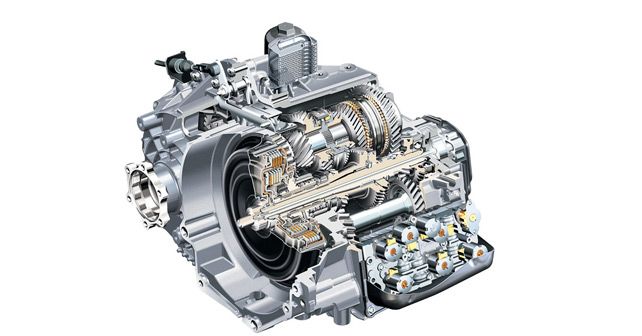
The double clutch automatic gearbox has the fastest shift times amongst automatic transmissions but they come with added weight and complexity. Here's an understanding of how it works.
Double clutch gearboxes are essentially like two separate manual gearboxes accommodated in one housing. One of the multiplate clutches has a hollow shaft that passes another shaft which is connected the second clutch that is housed behind the first clutch pack. Both clutches are connected to two separate gearboxes (in essence) within the housing, that in turn are connected to the output shaft by the driving gear wheels to the driven gear wheels. The first clutch holds the odd-numbered gears along with reverse gear while the second clutch holds the even-numbered gears. The output shaft holding all the driven gear wheels house dog clutches that connect to the gear wheels in order to synchronise the output gears to the input gears.
When you select Drive, a dog clutch is fixed to first gear ensuring that the gear wheel drives the output shaft that in turn drives the wheels of the car. All this while gears 3, 5, 7 and reverse rotate freely on the first clutch’s’ shaft.
Meanwhile, the output shaft is also driving the gear wheels of the second clutch and a dog clutch is already in position with second gear. So, all that is required now is for the car’s electronic system to pass the command to the gearbox to engage the next gear. When this command is automatically passed by the car or manually by the driver, the gearbox disengages the first clutch and engages the second clutch holding even number gears. As a result, the second clutch’s shaft begins to drive the output shaft.
Meanwhile, the first clutch pack’s shaft is freely rotated by the output gear which in turn means that the odd gear wheels are freely rotating as well. At the same time, a dog clutch is in position to grab either first gear or third gear depending on throttle input which is the deciding factor on whether you need an upshift or a downshift. And as soon as that is determined, the dog clutch will connect to the next gear. The gearbox's electrical system decides the right time for gear changes depending on the driver’s driving style and the velocity of the car. And when it does switch to the other clutch, its shaft would have already been connected to the next gear. This is why double clutch gearboxes have the fastest shift times. Reverse gear is operated by adding an idle gear between the reverse gear driving wheel and the driven wheel. The idle gear changes the direction of the driven wheel on the output shaft which in turn will drive the wheels in the opposite direction.
DSG gearbox modes
P – Park
R – Reverse
N – Neutral
D – Drive
S - Sport




















Write your Comment